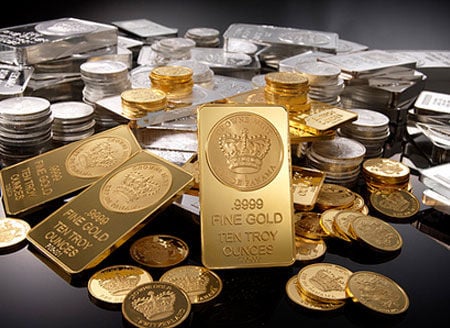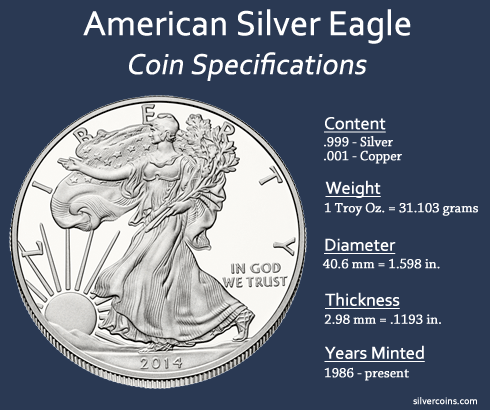This morning I talked with my friend Blake who owns the Pacific Rim Gold & Silver LLC, a local coins shop. We were talking about the various ways you can get ripped off while buying precious metal.
In a near by town in Northern California, several people were recently ripped off by an unscrupulous coin dealer. There are currently a number of counterfeit coins made in China showing up on the west coast and on ebay.
The first rule is that the coins or bars should have the correct weight. Precious metals such as gold and silver are normally sold by the troy ounce. An ounce of gold is more than the typical ounce found at the grocery store. There are two systems for measuring weight. The one for precious metals is called the troy ounce.
The other is used for commodities such as sugar, grains, and typical grocery items. It is called the avoirdupois ounce. Every time you step on the scale at home or weigh food found in the grocery, you use the avoirdupois weight system. There are 16 avoirdupois ounces in a pound.
Avoirdupois weights – An Avoirdupois pound is equal to about 453.59 grams, or 14.583 troy ounces. One avoirdupois ounce = 437.5 grains, or 28.35 grams. One avoirdupois pound equals 16 (avoirdupois) ounces or 453.59 grams. That is the equivalent to 14.58 “troy” ounces.
When you purchase a 1-ounce silver or gold coin, you are receiving a “troy” ounce. If you put that same 1 troy oz. coin on a grocery store scale, you will find that it weighs about 10% more than the food ounce you are familiar with. It will weigh about 1.1 avoirdupois ounces. Consequently, a grocery store pound that weighs 16 avoirdupois ounces (or 453.59 grams) will contain about 14.58 troy ounces. A troy ounce weights 480 grains. There are 12 troy ounces per troy pound, or 373.24 grams.
This post will not make you an expert, but provide some guidelines to help you protect yourself against crooks. You may encounter people wanting to sell or trade jewelry, flatware, or other forms of silver or gold. First, become familiar with the appearance and feel of gold and silver. Compare the sheen of the gold or silver jewelry to other jewelry you own.
Here are a few simple guidelines to follow when buying precious metals
- If the jewelry has been worn for some time, take note of any discoloration. If gold jewelry creates black markings where you wear it or turns green on any part, then it is likely fake.
- Real silver, will turn dark when exposed to air for too long, if silver stays silver color when exposed to the atmosphere for a long period of time it is probably fake.
- If the metal flakes or rubs off it is probably fake.
- If the piece of jewelry is magnetic, it is probably fake. Because of the plating, you need to use a strong magnet. A weak one won’t always work.
- On coins from government mints, check the dimensions.
- You will want to get a scale that measures at least to 2 decimal points in grams. There can be bought on Amazon for under $20. Use coins you are sure of as a gauge to get the correct size and weight.
- You may want to get a good set of calipers for measuring the coins.
- Get a good 10-power loupe.
- Look for mismatched surfaces, text spacing, crevices, or edges that will stand out if it is a fake.
Hallmarks
Hallmarks are defined as an official mark stamped on gold and silver articles to indicate origin, purity, or genuineness.
You will need a magnifying glass or loupe to view the markings on jewelry flatware or other gold or silver items. First, examine the item closely to find any hallmarks. On a ring, the marking is normally inside the shank. On a chain or bracelet, it is at the end of a piece called a tag, or on the clasp. Beware – it may be that only the clasp is genuine and it was added to a non-gold chain to fool you. On a pendant, it is on the bail, which is the part of the piece that the chain goes through, or it is on the back of the piece. On earrings, it is on the post, or on the back of the piece.
There are to many different hallmarks to list them in this article. But you can purchase books on them or look them up on the internet.
Test Kits
The most effective method to identify precious metals is to use chemical testing. It is not hard. There are many test kits available for purchase on the internet. You can make your own test kits, but after doing research on the various methods, I recommend you buy premade kits. They are quite inexpensive and can be purchased off the internet.
The down side to chemical testing is that plated items will test as positive. If you are dealing with a large bar, for example a 100 ounce bar, it is recommended that you drill a small hole in the bar and make sure that it is not another material that has been plated. With smaller pieces you may want to make a file mark on it deep enough to be sure you have went through any plating.
There are electronic devices that will test precious metals to verify that they are real. However, they are too expensive for most of us to own. Many reputable coin stores like my friends will check your precious metals for free to help you out.
A good rule to remember is always buy precious metals from businesses that have a good reputation.
Howard



[lasso rel="emergency-preparedness-more-a-manual-on-food-storage-and-survival-2nd-edition-revised-and-updated" id="35334"]